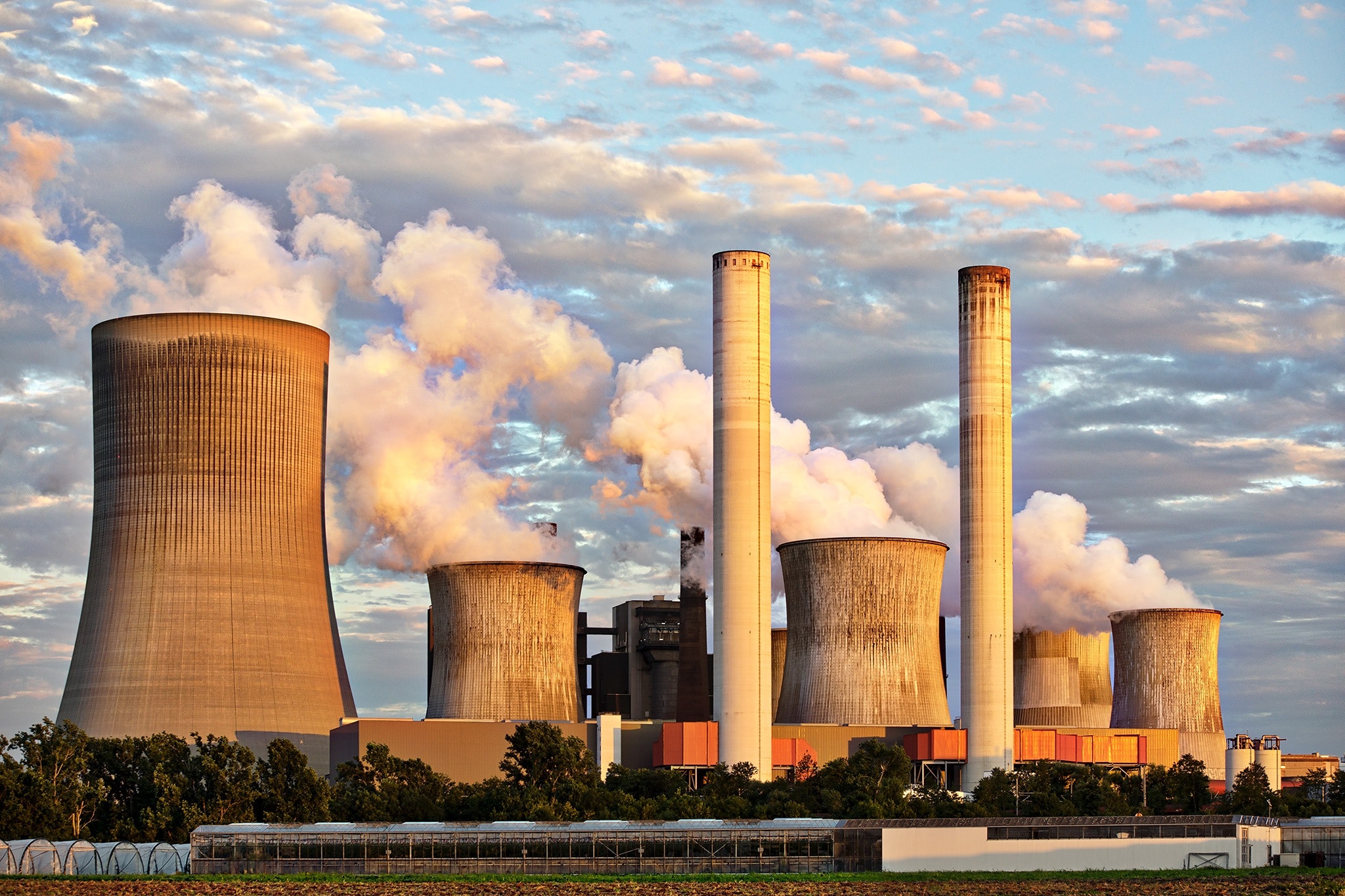The concept of energy density is critical in both energy storage and transportation. Energy density refers to the amount of energy that can be stored in a given volume or mass of a substance. The higher the energy density of a substance, the more energy it can store in a smaller volume or mass.
Over time, humans have gone from using very low energy dense energy sources like burning wood to over time using more and more energy dense forms of energy. From fossil fuels like coal, oil, and natural gas, to recent developments in nuclear energy, we have moved progressively up the curve of energy density until the boom in renewable energies like wind and solar.
According to Bradley E. Layton, “Gasoline is ten quadrillion times more energy-dense than solar radiation, one
billion times more energy-dense than wind and water power.“ Whatever the future holds, energy density will play a role in which forms of energy pave the path to a low carbon future. This isn’t conjecture, it is simple physics. Until then, oil and gas will play an important role in providing affordable and reliable energy that will allow an increasing number of humans to flourish.
Be sure to also subscribe on Apple Podcasts via the link above and please leave us an honest rating and review. We read every one of them and sincerely appreciate any feedback you have. To ask us a question to be featured on an upcoming episode, please leave a comment below or send an email to feedback@mineralrightspodcast.com.
Historical Perspective
Here is a historical overview of human use of different forms of energy over time based on the use of increasingly dense forms of energy:
Early human societies relied on biomass energy, such as wood, for cooking, heating, and light. However, biomass energy is a relatively low-density form of energy, meaning that it takes up a lot of space to store and transport.
Fossil fuels are a more dense form of energy than biomass, which allows for the development of new technologies, such as the steam engine and the internal combustion engine, leading to a massive increase in energy consumption.
The 20th century saw the rise of nuclear energy, which produces a lot of power from a small amount of fuel. However, nuclear energy is also a controversial form of energy due to the risks of accidents and the potential for nuclear proliferation.
The 21st century has seen the rise of renewable energy sources, such as solar and wind power. Renewable energy sources are a clean and sustainable form of energy. However, they are still a relatively new technology, and there are still challenges to overcome in terms of cost and scalability. Interestingly, with renewables, we are attempting to transition to less dense forms of energy for the first time in modern human history. We are moving away from coal, oil, and natural gas (and nuclear in some countries) to wind and solar power. Despite its potential, renewable energy still faces practical challenges in addressing climate change.
Human societies have evolved to use increasingly dense forms of energy over time. This is because denser forms of energy are more efficient and allow for the development of new technologies. Although we would like to transition to cleaner and more sustainable forms of energy, it becomes challenging when these forms are less energy-dense, more expensive, and less reliable. Additionally, when considering the mining, transportation, and manufacturing of the finished products required for this “energy transition,” these more sustainable forms of energy are only marginally better from an environmental impact standpoint. These steps in the lifecycle of “renewables” have an environmental impact on the land, water, or in terms of CO2 emissions.
Comparison of Energy Densities
According to a paper by Bradley E. Layton published in the International Journal of Green Energy:
A single gallon of gasoline contains approximately forty megajoules of chemical
Bradley E. Layton A Comparison of Energy Densities of Prevalent Energy Sources in Units of Joules Per Cubic Meter
energy. Dividing energy by volume yields an energy density of ten billion joules per cubic
meter. Gasoline is ten quadrillion times more energy-dense than solar radiation, one
billion times more energy-dense than wind and water power.“
This comparison is staggering. That said, Nuclear energy dwarfs even oil and gas as being one of the most dense forms of energy. According to the Nuclear Energy Institute, ““Thanks to the energy density of uranium fuel and efficient operations, 93 reactors generate nearly 20% of all U.S. electricity.” In fact, 1 Uranium fuel pellet the size of your fingertip has as much energy as “17,000 cubic feet of natural gas, 149 gallons of oil, and 1 ton of coal.”
Why Energy Density is Important
The concept of energy density is critical in both energy storage and transportation. Energy density refers to the amount of energy that can be stored in a given volume or mass of a substance. The higher the energy density of a substance, the more energy it can store in a smaller volume or mass. This is particularly important in transportation, where weight and space are crucial factors.
For instance, in aviation, jet fuel (a more refined version of kerosene) has a high energy density. It is a go-to option for aviation because every pound matters when you are flying. The amount of fuel that can be carried is limited by the weight of the plane, and fuel can make up to 45% of a plane’s weight at takeoff. In contrast, cars use less fuel than planes, where only 5% or less of the car’s weight is usually fuel. However, this is not the case for electric cars, which have heavy batteries that make up about 25% of the car’s weight. This makes it challenging to balance the weight of the car and the battery, especially for long-range trips.
Besides, the low energy density of batteries makes it impractical to use them for electric rockets or planes. In most cases, the batteries will be too heavy to carry themselves. This makes electric-powered transportation a challenge for now, but there is ongoing research to improve energy density and make electric transportation more practical.
Conclusion
When talking about the energy transition, energy density has to play a role in the path to a low carbon future. This isn’t conjecture, it is simple physics. According to the report by Bradley E. Leyton, “it is difficult to conceptualize the quadrillionth ratio between solar energy and petroleum density. A quadrillionth is a millionth of a billionth. Based upon the current technological, economic, and political climate, the sun, the wind, the moon (tidal), the earth (geothermal), and all of the world’s people cannot compete with ‘‘black gold’’ on the basis of energy density.”
There are tradeoffs to be made between all forms of energy. But high energy density and their low cost are reasons why fossil fuels are likely to be used for decades to come – until we come up with a better solution that meets the requirements fulfilled by fossil fuels, that is in terms of high energy density, high reliability, and low cost.
For mineral and royalty owners who are concerned about the future potential of their oil & gas interests, as long as this remains the case then it is likely we’ll see continued drilling in the U.S. and it is not a matter of if but when when it comes to drilling activity possibly extending to other areas within the major shale basins and plays that are currently active today.
Resources Mentioned in this Episode
- A COMPARISON OF ENERGY DENSITIES OF PREVALENT ENERGY SOURCES IN UNITS OF JOULES PER CUBIC METER Bradley E. Layton
- Nuclear Fuel
- The aviation industry wants to be net zero—but not yet
- Back to the Future – Doomberg
- MRP 93: The Pros and Cons of Wind Energy
- MRP 94: Leasing Land for a Solar Farm
- MRP 127: Justin Huhn and the Bull Case for Uranium
Thanks for Listening!
To share your thoughts:
- Leave a comment or question below (we read each one and your question may be featured in a future episode)!
- Ask a question or leave us feedback via email.
To help out the show:
Click the Apple Podcasts Logo Above to leave us a rating & review. It really helps us reach those that need to hear this information and only takes a minute. We greatly appreciate it! Plus, you can get a shout out on a future episode!
Thanks again – until next time!




